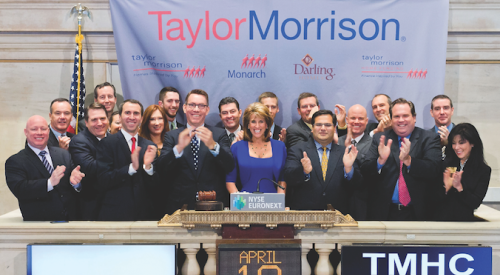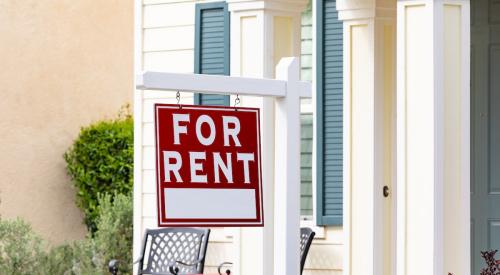|
|
Median new home prices in Las Vegas rose more than 50 percent during the first six months of this year, driven to extremes by a huge influx of speculative buyers. It's a classic example of a local pricing bubble. The way it's now defusing provides a lesson to builders in other overheated markets, and to some housing stock analysts ù to avoid the paranoia that swept Wall Street when it got wind of one public builder dropping prices in one market.
During the first week of October, Pulte Homes' stock lost 21 percent of its value. The news that Pulte was dropping its earnings projections for the year, based on lower than expected pricing and unit volume in Las Vegas, set off a chain reaction among investors spooked that a national housing price bubble was beginning to burst. In the following few days, D.R. Horton's stock lost 14 percent of its value and Lennar's 11 percent. The entire home builder group was down 5 percent by mid-October.
Just The Facts
The facts don't support the fears. "Pulte's situation seems to be exclusive to Vegas, and to a specific price point," cautions analyst Margaret Whelan of UBS Investment Research. "That market got very hot for a lot of reasons. There are a lot of speculative buyers. But it's a very efficient market. It began correcting from the end of June on."
Pulte was the most aggressive of a small group of builders pushing prices in Las Vegas, especially in high-end, move-up homes. The pace of price increases peaked in March and ran out of steam in June. Some builders, including D.R. Horton, began to quietly drop prices in July. Pulte held the line until this fall, but then announced cuts in an ad campaign.
"What's happening now only looks bad when you compare it to the market in the first four months of this year, which was insane" says Las Vegas market researcher Dennis Smith. "That was driven by speculators."
Distorted Market
"The purging of investment buyers from the new-home market began last winter," Smith says. "Most builders began trying to avoid selling to speculators. But Pulte wasn't one of them," he recalls. "At a March seminar. I held up a Pulte brochure and said, 'Check out these prices!' Pulte had raised prices by $140,000 (per house). I said, 'This is a problem. We have to get rid of the investors!'
"That was the high point," Smith says. "The investors started to flip houses in June. By September, some Pulte subdivisions hadn't sold a house in two months. Outside the sales office you saw ten 'for sale' signs on recently completed homes."
Larry Murphy, president of Sales Traq, a firm that reports on Las Vegas housing sales and closings, says: "In the last quarter, the market here has separated into three groups ù 10 percent lowering their 'brochure' (advertised) prices, 10 percent still raising prices, and 80 percent holding prices flat for the last three months.
"There are two prices for every home ù brochure and closing," Murphy notes. "The median brochure price peaked about July and has declined ever since. Closing prices are still going up, because they lag brochure prices by five to six months. Resale houses are now on the market for an average of about 30 days. The market is back to normal. No more bidding wars for existing homes. No more waiting lists for new homes."
Pulte's Story
To Pulte's credit, the firm acknowledges culpability. "In February, there were about 1,500 homes for sale in Las Vegas, new and existing," a spokesman for the firm tells PB. "Demand was high, and everything we released was snapped up. We raised prices aggressively and got ahead of the market.
"By August and September, houses on the market grew to 15,000ùa tenfold increase. Demand slowed, traffic to our communities was impacted. We were experiencing cancellations. So we announced a price adjustment in the market on October 2. The average price of our homes dropped from $490,000 to $420,000. We said this is a Pulte-specific situation. We still think the market is in good shape."
Return To Normalcy
Las Vegas-based researchers, and their data, indicate the market is, indeed, returning to normal. Smith reports strong September numbers. "We counted 2,312 recorded new home sales," he says. "That brought our 2004 sum to 21,159." (A year-to-year increase of 3,155 recorded sales or 17.5 percent.) September building permits may be a better barometer. They reversed a three-month slide. "We sorted through 2,512 new home permits...It brought the 2004 total to 27,847."(Up 8,961 from 2003. So the year-to-year increase for the nine-month period is still 47.4 percent.) And the median price of new home closings was $278,924, a year-to-year increase of 25.3 percent. "We might see one more month of significant increase, and then the new home median price should level off."
Smith reports 5,079 home sales in the existing home market in September, bringing the total to 50,942 for nine months, which is still up 39.6 percent over the same period of 2003. September's median resale home price was $250,000, unchanged from August, but up 42.9 percent from the same month a year ago. But that price has been stable for three months.
"The underlying strength of this market is job creation," says Smith. "According to UNLV, the September in-migration figure was 7,385 new residents. We are averaging 7,216 a month for the year."
Market Lessons
Here are some tips for builders in other over-heated markets around the country, to avoid what happened to Pulte in Las Vegas:
1. Watch pricing of resale homes for hints that out-of-town investors may be increasing. When year-to-year price increases top 30 percent, you're in a danger zone.
2. Look to California builders for examples of the kind of controls, in sales office procedures and contract clauses, that will cut most of the speculators out of your customer base. (PB will have a feature article on this in an upcoming issue.)
3. All real estate markets are local, and location is still the factor affecting price, but keep a close eye on how your pricing relates to others. If demand for your product is high enough to allow inordinately higher prices, it could be that you're letting too many speculators slip through.












